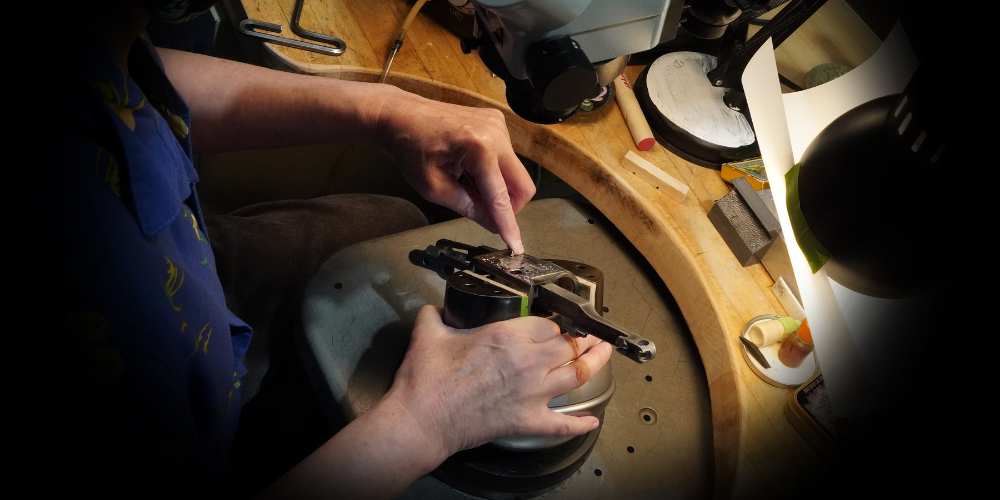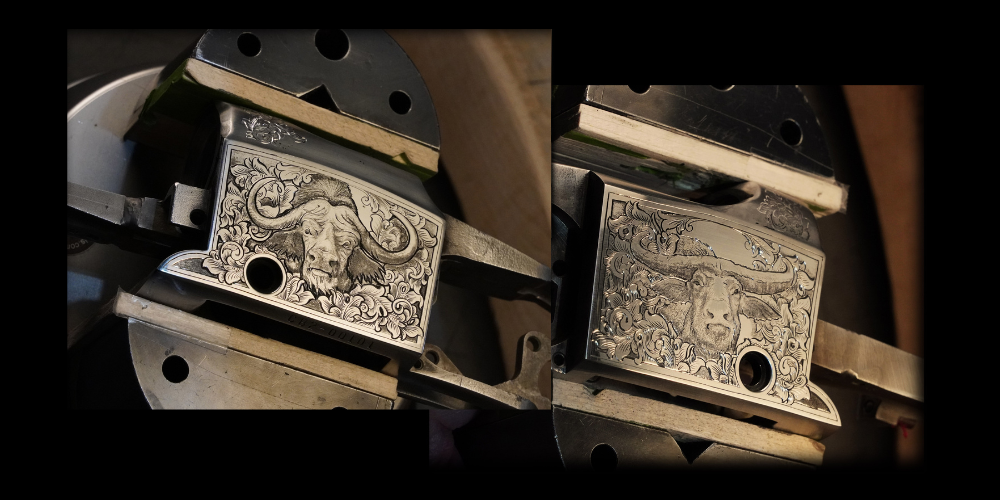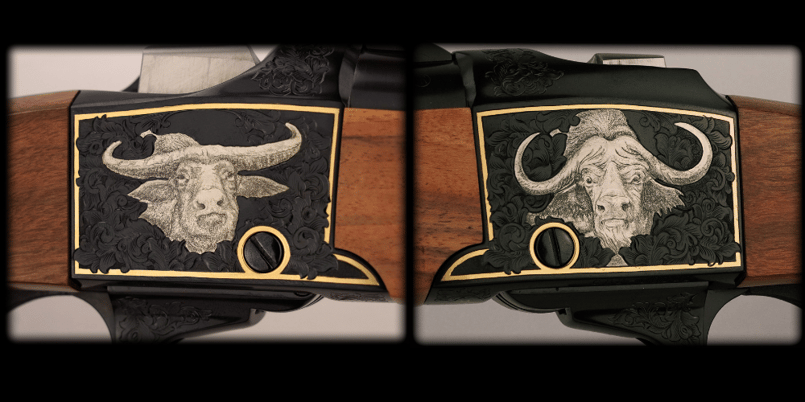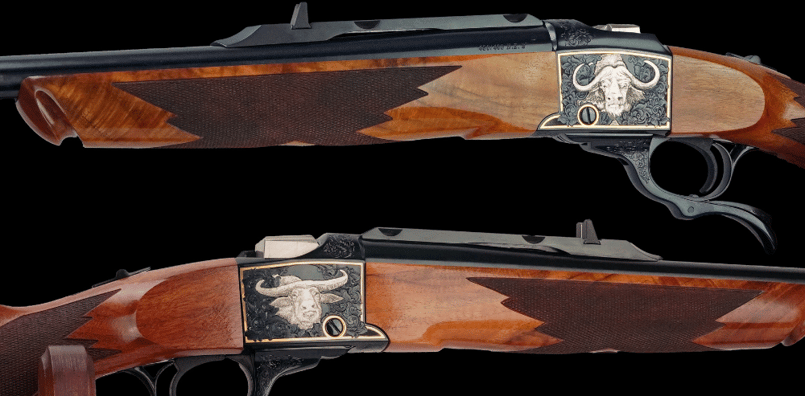Mastering the Craft: Designing Collectible Firearms
Designing a collectible firearm is a journey that combines passion, artistry, and craftsmanship. It's a strategic process that requires both creativity and understanding. Being well-educated in the craft is essential when designing a collectible firearm. At Baron Engraving, we understand the significance behind this approach, combining skill and innovation to your custom order.
In this blog, we will guide you through the detailed process our team of experienced professionals employs to craft a collectible firearm, that truly embodies your unique vision and passion.
Step 1: Researching and Finding Inspiration
The first step in designing a collectible firearm is extensive research.


Understanding the historical and cultural significance behind what we are creating is essential. An authentic firearm not only reflects the artisan's mastery but also becomes a timeless collector's item. Whether it's a particular time period, a pivotal life event that needs to be captured, or a specific engraving style/theme, gathering ample research will help set the foundation for the design.
Ultimately, the custom firearm’s design aims to fulfill the client's vision. Research and inspiration not only provide the foundation for an informed design but also allow us to have effective communication with our customers. By sharing the research and inspiration behind the design choices, our artisans can establish trust and confidence with clients, aligning the final product with their desires.
Step 2: Conceptualizing and Drafting

Once we have gathered enough inspiration and knowledge, drafting can begin. This step is critical as it allows the artisan to translate the customer's vision and the research conducted into a tangible concept.
By visualizing the design, the engraver can clarify the details, motifs, and themes that will be incorporated into the firearm. This clarity ensures that both the client and the artisan are on the same page, minimizing potential misunderstandings and design revisions later in the process.
Drafting allows for the detailed planning of the engraving layout and pattern. It ensures that the design elements can fit harmoniously on the firearm's surface, considering shape, size, and existing features.
The conceptualizing and drafting stages also help streamline the engraving process. When a well-thought-out design is in place, it's easier for the engraver to work efficiently, minimizing the time required to complete the project. This not only benefits the artisan but also ensures that the client receives their custom firearm promptly.
Step 3: Communication, Collaboration, and Personalization
Every custom firearm is a unique piece of art, often tailored to the customer's specific preferences and requirements.
Personalization is what sets custom firearms apart from mass-produced ones and makes them treasured possessions for their owners. Collaboration is key in the design process. A collaborative approach ensures that the final design not only aligns with your vision but also meets practical and artistic expectations.
By reviewing the drafted design, the engraver can spot potential issues, make adjustments, and address any discrepancies that might affect the final product's quality. This proactive approach minimizes errors and the need for corrections once the engraving process is underway.
Step 4: Materials and Technical Precision

After careful consideration and input from collaborators, the design can be refined and finalized, moving us on to the next step of the engraving process.
Engraving a firearm requires a high degree of technical precision. Certain engraving techniques (e.g., hand engraving or machine engraving) must be taken into consideration, which is why it is so important to choose the appropriate materials and tools for the task.
When selecting the proper materials and tools to use, artisans must consider the type of firearm it is, what it is made of, and the desired finish. Technical aspects like these play a pivotal role in achieving the desired result and ensuring the firearm's functionality is not being compromised.
Step 5: Engraving and Quality Assurance

The engraving process is where the design truly comes to life. Skilled engravers meticulously carve the chosen design onto the firearm, paying attention to every detail. Techniques such as hand engraving, hammer and chisel engraving, or laser engraving may be used, depending on the design and materials.
Once all that carving and engraving is done, it's time for a close inspection. This is where we make sure the work is top-notch. Think of it as a quality check to ensure everything is just perfect. We also make any final touches necessary to make the firearm look and feel even better. This step is super important because it's what turns a plain old firearm into a true work of art.
Work With Baron Engraving
Designing a collectible firearm is an art form that demands dedication, creativity, and a deep respect for tradition.
At Baron Engraving, we honor this tradition and collaborate with enthusiasts to transform their visions into timeless masterpieces. From research and sketching to the engraving process and final presentation, every step is carefully executed to ensure that the resulting firearm is a true work of art, embodying the essence of its collector's passion and creativity.
To find out more about how you can order your next engraving project, contact us today.
